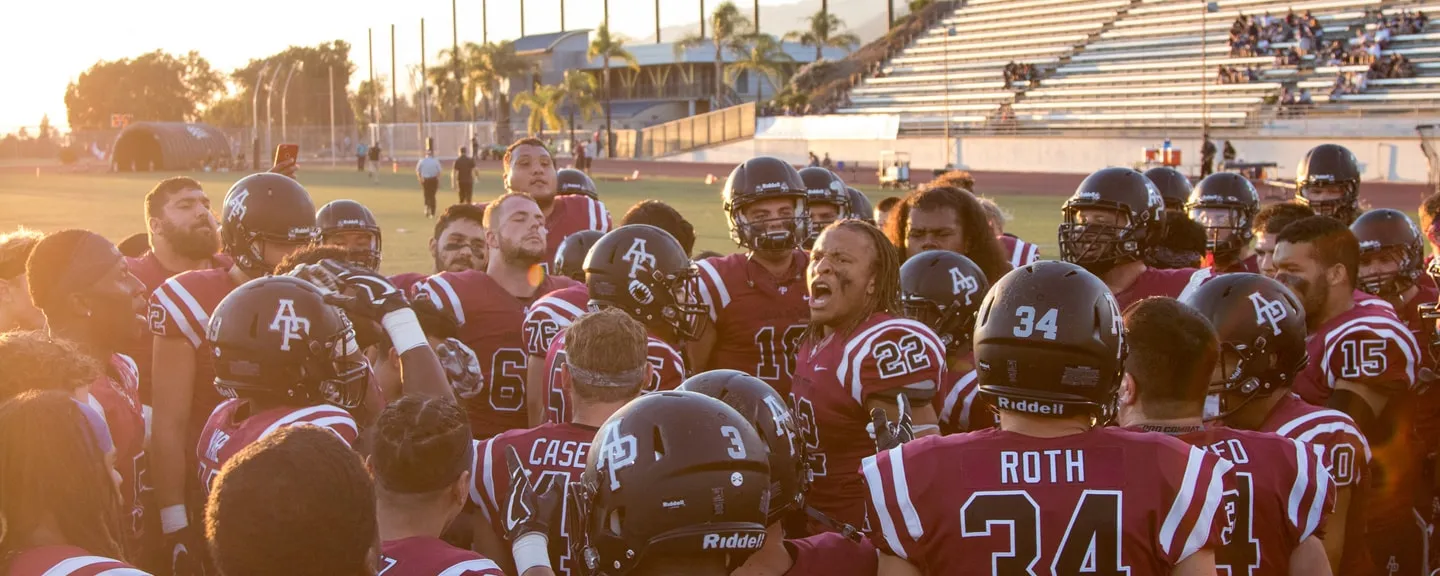- Home
- >
- APU Articles
- >
- News Article
College Sports Scholarships: Top 5 Misconceptions
December 18, 2018 | Written By Ashley Eneriz

While that story is incredibly motivating, the truth is that many talented student-athletes will not experience the same magical college recruitment process. In fact, there are a few misconceptions around college sports scholarships.
Here are five common myths that all parents need to be aware of if their children are hoping to compete in athletics at the collegiate level.
1. The Best Athletes Get Full Rides
Even the greatest players are not guaranteed the opportunity to attend college on a full-ride scholarship. This has nothing to do with how amazing your student-athlete is, but instead depends on how the majority of colleges disburse athletic scholarship funds. For instance, at Division II schools, 56 percent of athletes get aid—but a full-ride scholarship is rare.
“Families frequently ask about a full-ride athletic scholarship and the term ‘full ride’ is often misunderstood,” explains Carlie Buys, senior admissions representative and athletics liaison at Azusa Pacific University. “Coaches will look at a student’s financial aid package and combine potential federal grants and academic scholarship along with an athletic scholarship to close the gap for students they are recruiting.”
Being awarded an athletic scholarship comes down to two important factors: the athlete’s skill and the need of the team for their position. If you think that winning games is the only thing that counts for athlete scholarships, think again!
Coaches will look at more than your student’s highlight reel before deciding on scholarship candidates. College coaches want players with good grades and a good head on their shoulders, since competing at the college level is much more strenuous on a student’s schedule. A college athlete needs to be able to balance his or her schoolwork (and reputation) with their collegiate athletic career.
2. Sports Will Pay Most of My Child’s College
While schools in National Collegiate Athletic Association Divisions I and II annually provide more than $2.7 billion in college sports scholarships to more than 150,000 student-athletes in North America, only about 2 percent of high school athletes are awarded funds to compete in college. And athletics rarely cover a student’s entire expense, according to Buys.
Some sports are limited on how they can disburse the funds, as well. For example, head count sports (such as Division I football) restrict how many players can be on scholarship. Meanwhile, equivalency scholarships (all Division II sports) are not restricted and are given out on the coach’s discretion. In many cases, a coach would rather choose to extend funds to the whole team rather than give one or two players full-ride scholarships.
3. Scholarships Are Good for Four Years
Every scholarship is awarded on an annual basis and renewed based on the coach’s discretion. If an athlete is performing well in the sport and academically, then there is a good chance that their scholarship will be renewed each year, but it’s not guaranteed.
4. Grades Are Not a Deciding Factor
Being the top baseball player in the country won’t exempt anyone from doing well academically. Most schools require student-athletes to maintain a cumulative grade point average of 2.0 (C) or higher. At Azusa Pacific University, athletes must also pass 67 percent of the units they enroll in. “Incomplete” and “Withdrawn” scores act as non-passed classes.
Colleges and universities have to weigh a high school athlete’s grades along with their athletic ability. A student with a low GPA and below-average test scores can be a risk for the team; it is hard for a coach to build a successful squad if one of the players is a prospect of being disqualified for grades. Thankfully, many schools offer free tutoring and resources for all students.
5. Athletic Scholarships Are Only Available for Popular Sports
Good news! Football players aren’t the only athletes that win college sports scholarships. Numerous sports offer funding to athletes. In fact, APU offers athletic scholarships for every sport, including tennis, swimming and diving, water polo, and acrobatics and tumbling. Don’t hesitate to ask a university if they offer any aid for a specific sport. Many times they do, but might not advertise it as public knowledge.
Honing Skills and Competing at APU
So, how can parents help their student-athlete increase his or her chance of winning athletic scholarships? “Many factors play into it,” Buys says. “Not just success and excelling in their sport, but excelling in the classroom and in academics as well. This can show a coach a student-athlete’s work ethic.” In addition, Buys notes that community involvement is an aspect coaches look at when recruiting, as it can add to the student’s overall fit within the university as well as the athletic team.
Whether your student-athlete is a talented basketball player or an amazing gymnast, APU allows them to cultivate and display their athletic gifts in a faith-based environment. The university’s experienced coaches help students excel on and off the field, ensuring that when they graduate they are equipped to pursue the career of their dreams and stand firm in their moral excellence.
More than 450 Azusa Pacific University students currently compete in 19 sports. Since its founding, APU has claimed 48 national championships and 113 conference championships. Ready to be a Cougar? Explore APU Athletics.